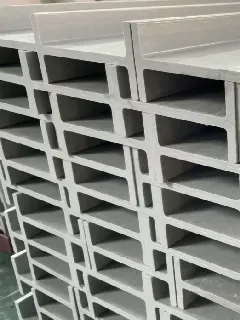loading...
- No. 9, Xingyuan South Street, Dongwaihuan Road, Zaoqiang County, Hengshui, Hebei, China
- admin@zjcomposites.com
- +86 15097380338
- Welcome to visit our website!
frp roof deck
Understanding FRP Roof Decks A Modern Solution for Roofing Needs
In the evolving landscape of construction and architecture, the choice of roofing materials plays a significant role in the durability, sustainability, and aesthetic appeal of buildings. One such innovative solution making waves in the industry is the Fiberglass Reinforced Plastic (FRP) roof deck. FRP roof decks offer a variety of advantages that make them an attractive choice for commercial, industrial, and residential applications.
What is FRP?
Fiberglass Reinforced Plastic, or FRP, is a composite material made from a polymer matrix reinforced with fiberglass. It is known for its durability, lightweight nature, and resistance to environmental factors, making it an excellent option for many construction needs. When used primarily in roof decks, FRP offers a combination of strength and flexibility that exceeds many traditional materials such as wood or steel.
Benefits of FRP Roof Decks
1. Lightweight yet Strong One of the most compelling advantages of FRP roof decks is their lightweight nature. This characteristic simplifies installation and reduces the load on the building’s structural framework. Despite being lightweight, FRP is incredibly strong and can withstand significant loads, making it suitable for large commercial buildings.
2. Corrosion Resistance FRP materials are resistant to corrosion, a common issue faced with traditional metal roofing materials. This property ensures that FRP roof decks maintain their integrity over time, even in harsh weather conditions or exposure to chemicals. For environments like coastal areas or industrial sites, this corrosion resistance is invaluable.
3. Low Maintenance FRP roof decks require minimal maintenance compared to other roofing materials. Their resistance to mold, mildew, and rot translates to lower long-term maintenance costs. Property owners can save both time and money, as regular upkeep is often less intensive.
frp roof deck

4. Energy Efficiency The reflective properties of certain FRP roofing materials contribute to energy efficiency. These materials can help regulate building temperatures, reducing the need for artificial heating and cooling. This can lead to substantial energy savings over time, making FRP an environmentally friendly option.
5. Versatile Design Options With advances in manufacturing technology, FRP roof decks can be produced in various shapes, colors, and finishes. This versatility enables architects and builders to meet specific aesthetic and functional requirements, whether for industrial warehouses or modern commercial spaces.
6. Resistance to Fire Many FRP materials are treated to improve their fire resistance. This quality enhances the safety of buildings using FRP roof decks, as they can slow the spread of flames and contribute to improved overall fire performance of the structure.
Installation Considerations
While FRP roof decks offer numerous advantages, proper installation is crucial to maximize their benefits. It is essential to engage experienced professionals who understand the nuances of working with FRP. Factors such as joints, fasteners, and weatherproofing should be carefully managed to ensure a watertight and structurally sound roof.
Conclusion
In conclusion, FRP roof decks represent a modern and innovative solution for a variety of roofing applications. With their lightweight construction, resistance to corrosion and fire, low maintenance requirements, and aesthetic versatility, they are well-suited for a range of building types. As sustainability and energy efficiency continue to be paramount in construction, the use of FRP materials is likely to grow.
Investing in FRP roof decks not only constitutes a forward-thinking approach to roofing but also supports the broader goals of sustainability and longevity in building design. For those looking to enhance their properties with a durable, efficient, and visually appealing roofing solution, FRP roof decks prove to be an exceptional choice. As we move toward more eco-conscious construction practices, the role of innovative materials like FRP will undoubtedly become more significant in shaping our built environments.
-
The Rise of FRP Profiles: Strong, Lightweight, and Built to LastNewsJul.14,2025
-
SMC Panel Tanks: A Modern Water Storage Solution for All EnvironmentsNewsJul.14,2025
-
GRP Grating: A Modern Solution for Safe and Durable Access SystemsNewsJul.14,2025
-
Galvanized Steel Water Tanks: Durable, Reliable, and Ready for UseNewsJul.14,2025
-
FRP Mini Mesh Grating: The Safer, Smarter Flooring SolutionNewsJul.14,2025
-
Exploring FRP Vessels: Durable Solutions for Modern Fluid HandlingNewsJul.14,2025
-
GRP Structures: The Future of Lightweight, High-Performance EngineeringNewsJun.20,2025
